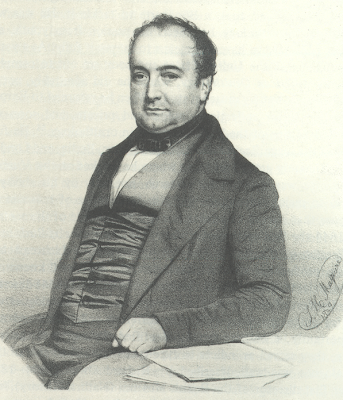


It has been suggested that this feud started as a conflict that arose between Wilson and Audubon themselves, during the meeting of the two in Louisville in 1810, mentioned in my first Wilson blog. However, this is unlikely. First off, Audubon was not really a rival to Wilson at the time, and indeed it has been convincingly argued that Audubon was inspired to go ahead with publishing his own work because of his meeting with Wilson. Also, Wilson had several times met other artists/naturalists with whom he had good relationships and there was no reason he should have then felt threatened by Audubon. And finally, Audubon and Wilson went hunting together a couple days after they first met, apparently perfectly amiably.
This feud actually began a decade after Wilson’s death, in April 1824, when Audubon first came to Philadelphia looking for a publisher and financial support for his planned Birds of America. There Audubon ran into significant resistance to his plan, at the heart of which lay the fact that Alexander Wilson had become one of the revered figures in Philadelphia scientific circles and Audubon was seen by some as a threat to Wilson’s preeminence.
Lawson, however, was not at all impressed, saying that Audubon’s drawings were “ill-drawn, not true to nature and anatomically incorrect.” Bonaparte and Audubon tried to convince him, but Lawson replied “I think your paintings extraordinary for one who is self-taught—but we in Philadelphia are accustomed to seeing very correct drawings.”
“When Alexander Wilson visited me at Louisville, he found in my already large collection of drawings, a figure of the present species, which, being at that time unknown to him, he copied and afterwards published in his great work, but without acknowledging the privilege that had thus been granted to him. I have more than once regretted this, not by any means so much on my own account, as for the sake of one to whom we are so deeply indebted for his elucidation of our ornithology.



It is definitely true that the drawings are essentially the same. However, Wilson’s backers, led by George Orb, claimed that the copying went the other way. In his text, Wilson had written that the specimen he used for his drawing of the Small-headed Flycatcher was shot in April 1812 in New Jersey and Ord said he was with Wilson when it was shot. Wilson also claimed to have shot “several of the same species” and Lawson said that he made the engraving of this bird from an actual specimen.



Finally, Ord pointed out that there were other cases where Wilson definitely had drawn his images from life, but where Audubon’s drawings were so similar that he must have copied Wilson. A good example is the two depictions of the Mississippi Kite, which Wilson clearly had produced before Audubon's print.
In the case of the small-headed flycatcher it is not clear who copied whom and the debate continues to today. But what makes this story particularly interesting is that the only small-headed flycatchers anyone has ever seen are the ones in Wilson’s and Audubon’s prints! No such bird has been found today and while over the years some have claimed to have spotted this bird, no specimen has ever been brought forth. It would appear that one of these naturalist probably drew some variant of another known warbler or flycatcher, but no one is sure. A fun puzzle and story!






